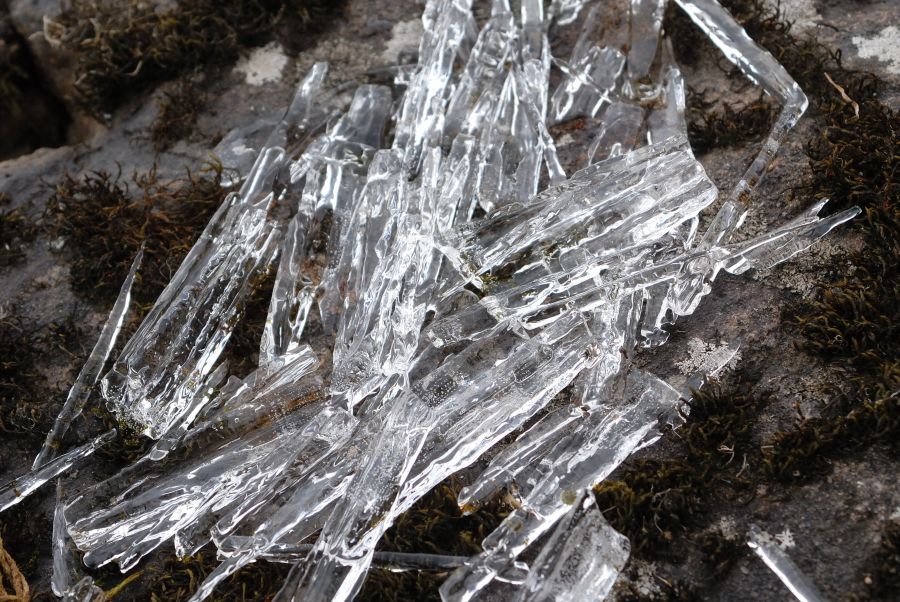 Posted: Mon Jun 01, 2009 6:48 pm Post subject: Ice candles - Zoom-Nikkor 25-50/4 AI Posted: Mon Jun 01, 2009 6:48 pm Post subject: Ice candles - Zoom-Nikkor 25-50/4 AI |
 |
|
Gurdie wrote:
This nice description of how lake ice melts away is from
http://climate.umn.edu/doc/ice_out/ice_out_description.htm
I just made some small additions.
In the late fall, the lake loses heat to the atmosphere, and then on a day or night when the wind is not blowing, ice forms. The ice gets thicker as long as the lake can continue to lose heat.
During the winter months, snow both reflects sunlight and insulates the lake. With a thick snow layer, the lake neither gains nor loses heat. The bottom sediment is actually heating the lake water slightly over the winter, from stored summer heat.
In March - April, as the air warms and the sun gets more intense, the snow melts, allowing light to penetrate the ice. Because the ice acts like the glass in a greenhouse, the water beneath it begins to warm, and the ice begins to melt FROM THE BOTTOM.
When the ice thickness erodes to between 10 and 15 cms, it transforms into long vertical crystals called "candles." These conduct light even better, so the ice starts to look black, because it is not reflecting much sunlight.
Warming continues because the light energy is being transferred to the water below the ice. Meltwater fills in between the crystals, which begin breaking apart. The surface appears grayish as the ice reflects a bit more light than before.
The wind comes up, and breaks the surface apart. The candles will often be blown to one side of the lake, making a tinkling sound as they knock against one another, and piling up on the shore. In hours, a sparkling blue lake, once again!
The picture is taken on 3rd May, the day the ice melted from Lake Saimaa.

_________________
Markku
Give me two hours a day of activity, and I'll take the other twenty-two in dreams.
― Salvador Dali
----------------------------------------- |
